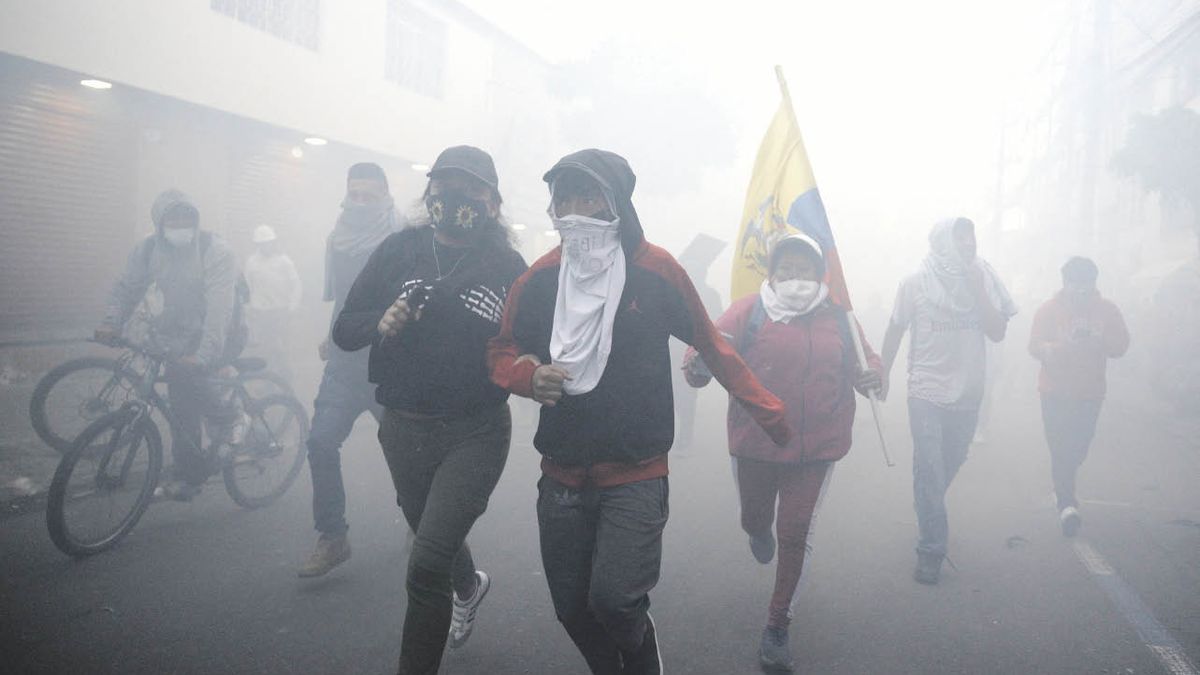But a large faction of the protesters then advanced towards the National Assembly, located a few meters away and guarded by a cordon of soldiers and police that the indigenous tried to break. A group of women led the protest.
Faced with pressure, the soldiers reacted with tear gas bombs and stun grenades, while the protesters threw stones. The crowd retreated to a park next to the House of Culture.
The leader of the demonstrations, Leonidas Iza, was surprised while giving an interview that was interrupted by loud explosions.
“That’s a really bad sign. We had asked our bases that we can simply have a peaceful march,” said Iza, president of the powerful Confederation of Indigenous Nationalities (Conaie).
Some 14,000 protesters are mobilized in various parts of the country to demand relief from the high cost of living, made more expensive by the rise in fuel.
In Quito alone, some 10,000 indigenous people pressure President Lasso, isolated by covid.
Sources in the country’s capital consulted by Ámbito commented that the situation in the city was unsustainable because the blockade of the roads added to the daily chaos has limited the supply of fuel and food. Media estimated that the losses for the country will be millions.
In parallel, hundreds of indigenous people forcibly occupied a power plant in the south of the country, although the supply was guaranteed.
In a dollarized economy, where fuels are subsidized, the increase in gasoline and diesel made freight more expensive. The indigenous people allege that they are harvesting at a loss.
Lasso, meanwhile, argues that this protest is an attempt to remove him from power. The Armed Forces have given him his explicit support.
Source: Ambito
David William is a talented author who has made a name for himself in the world of writing. He is a professional author who writes on a wide range of topics, from general interest to opinion news. David is currently working as a writer at 24 hours worlds where he brings his unique perspective and in-depth research to his articles, making them both informative and engaging.




